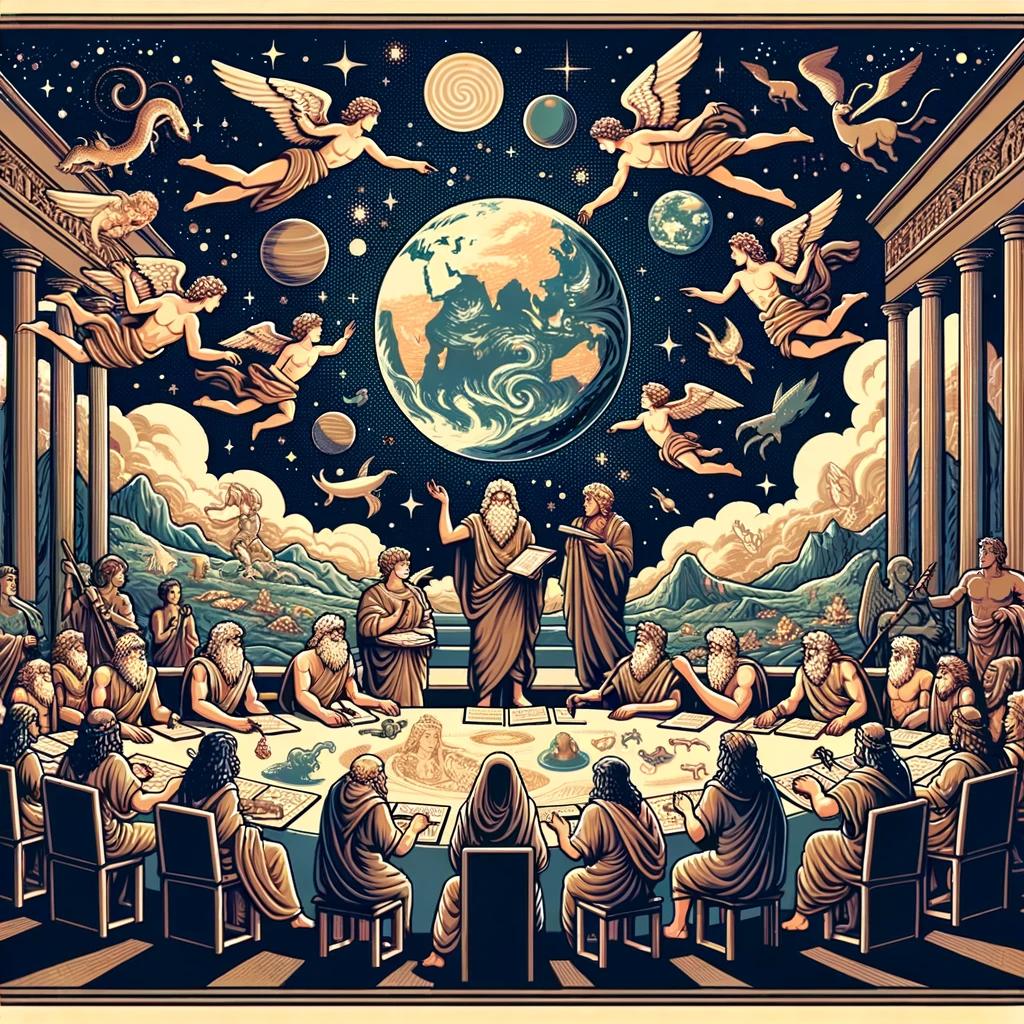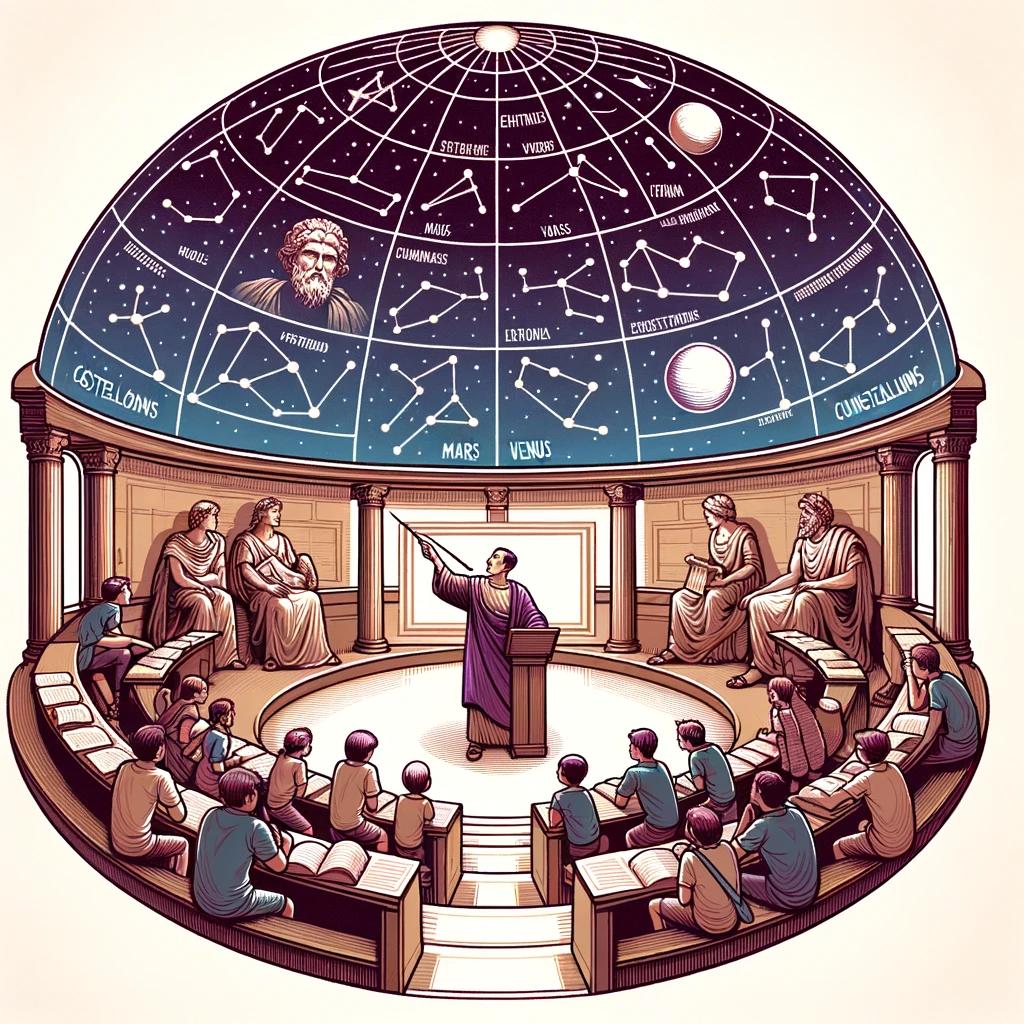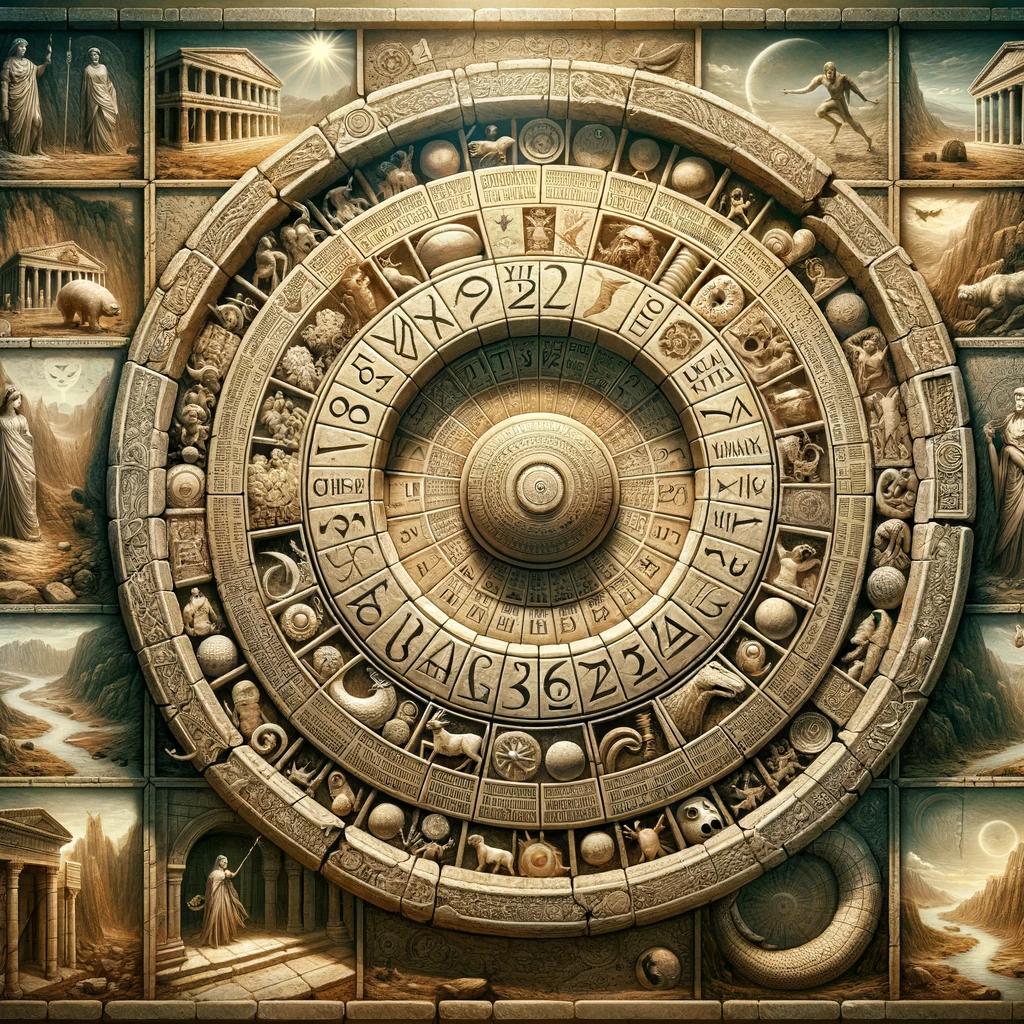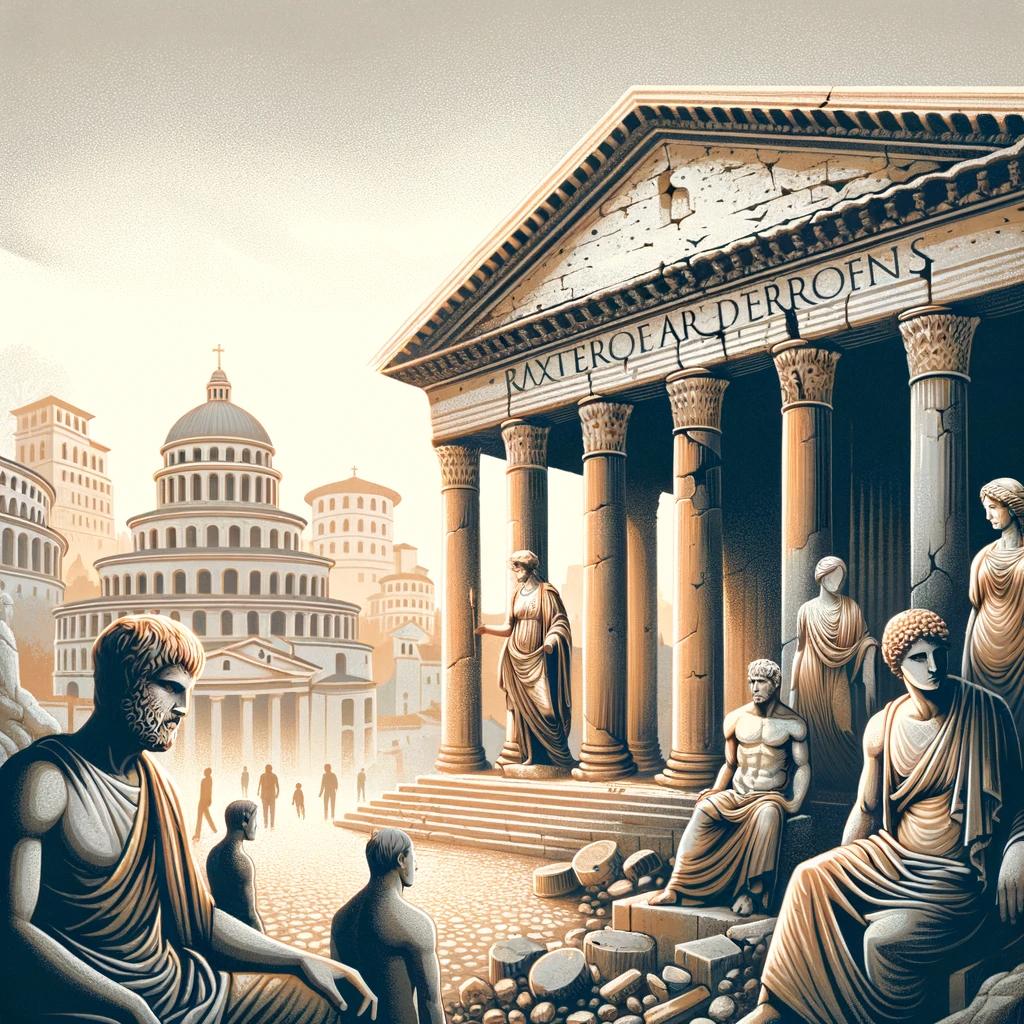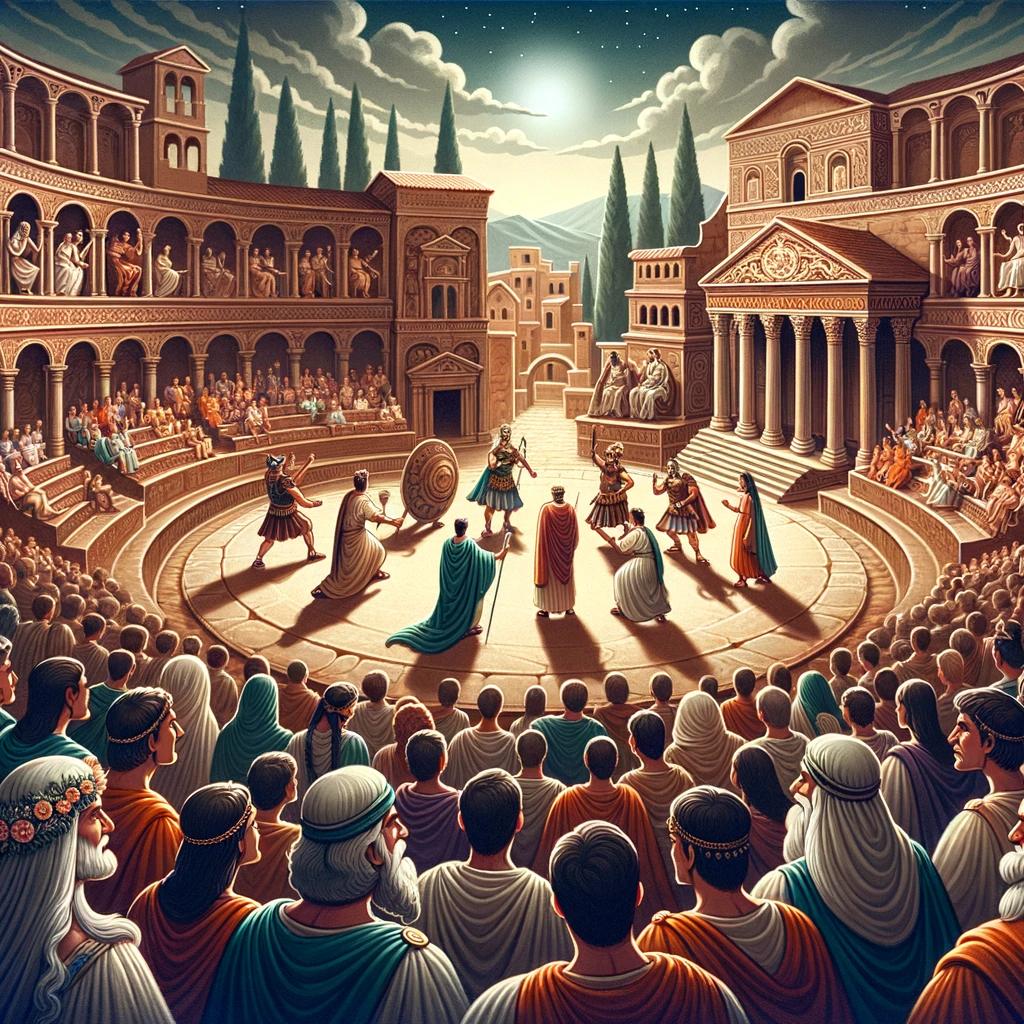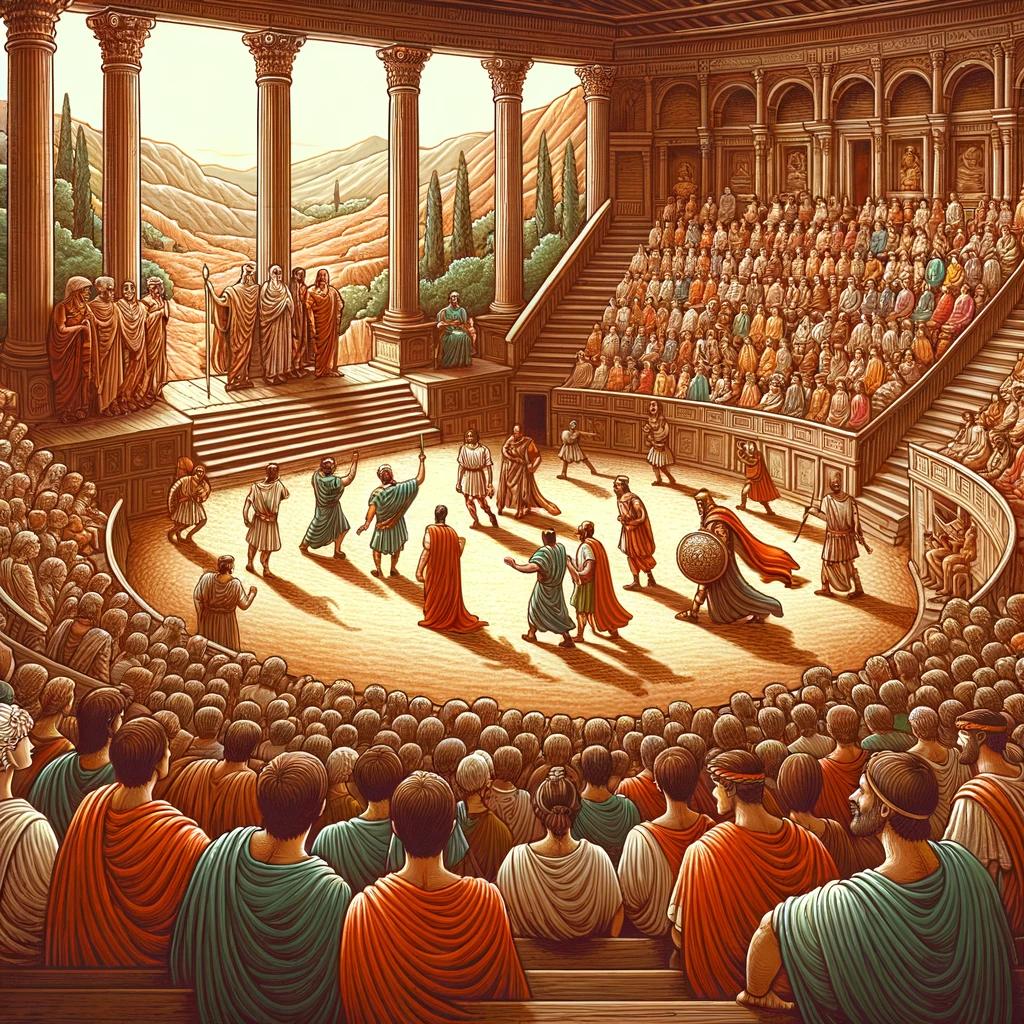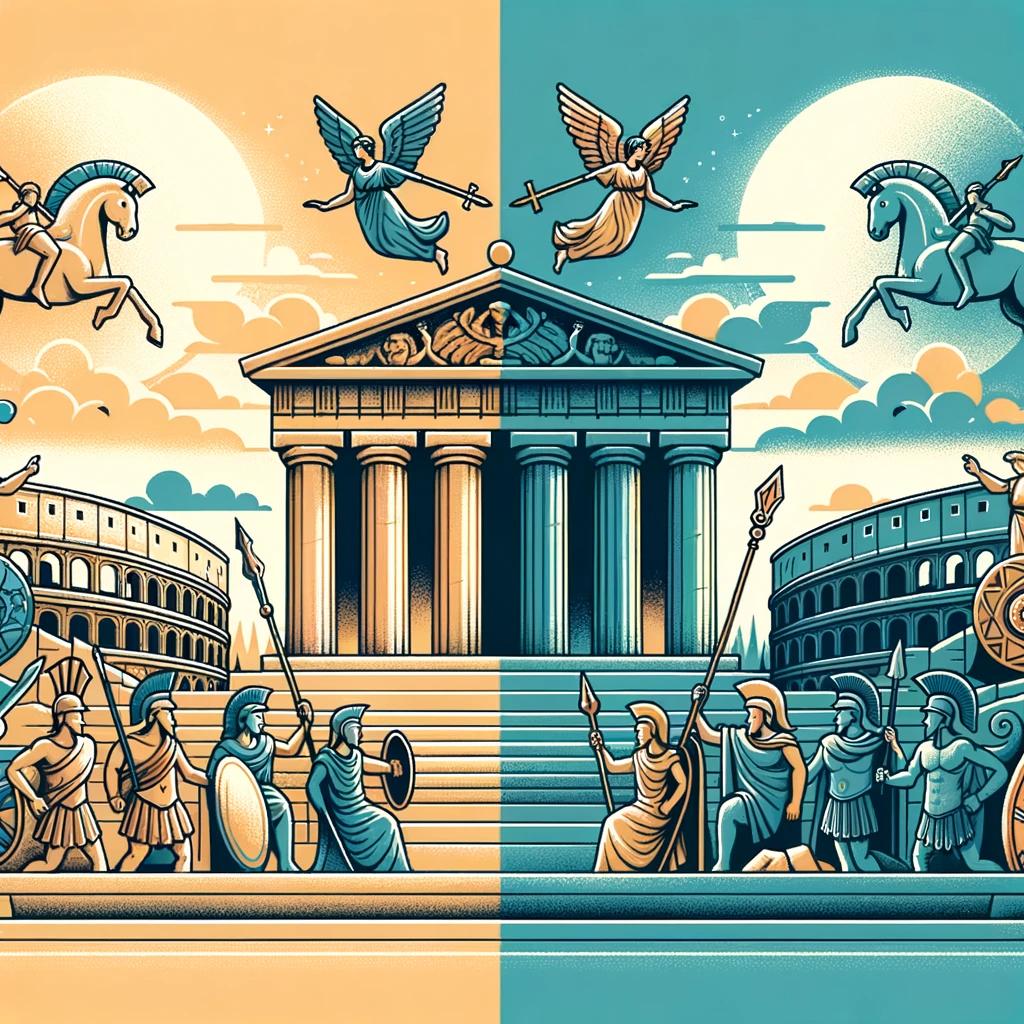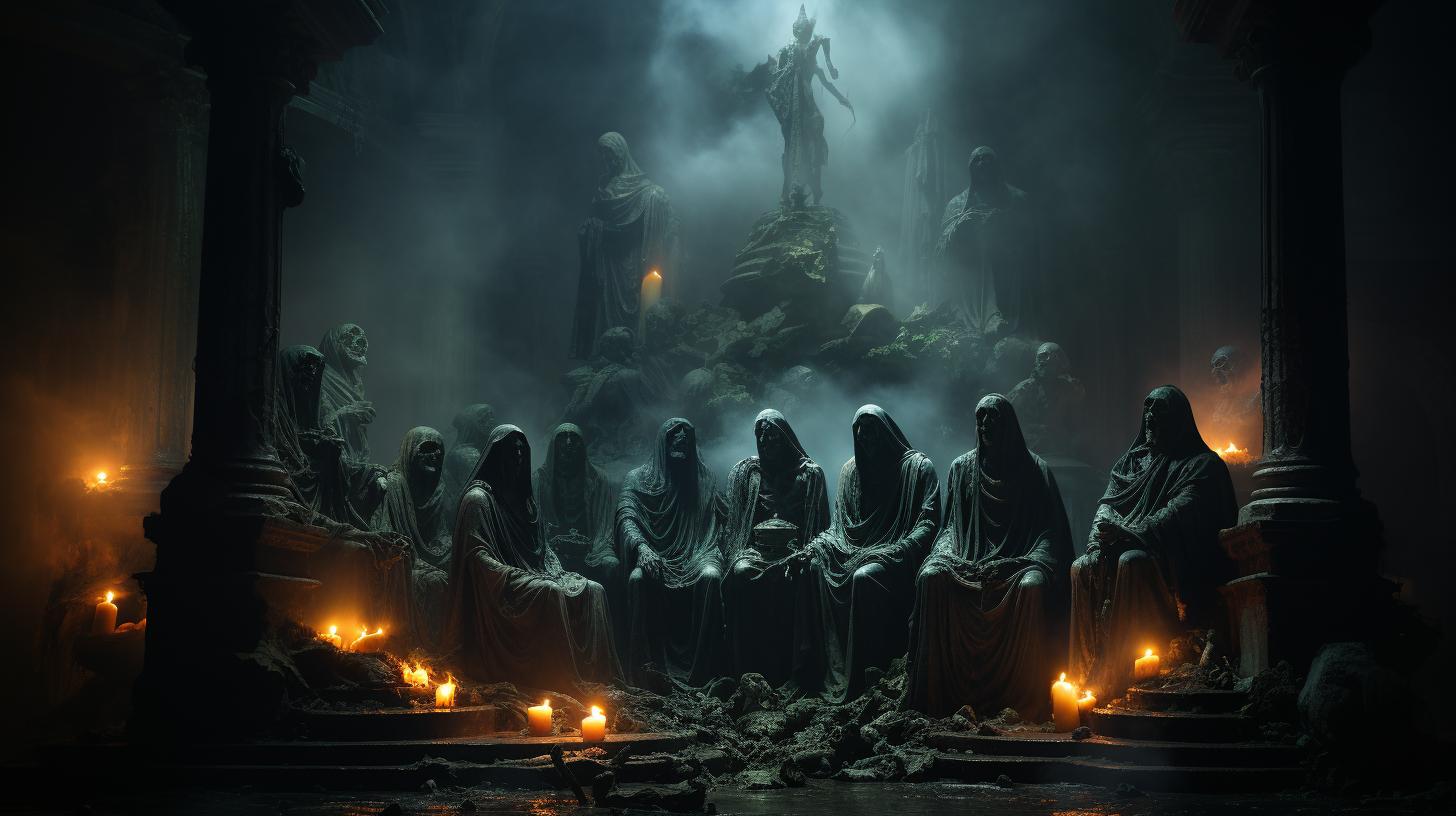Explore the Fascinating Roman Mythology Creation Myth
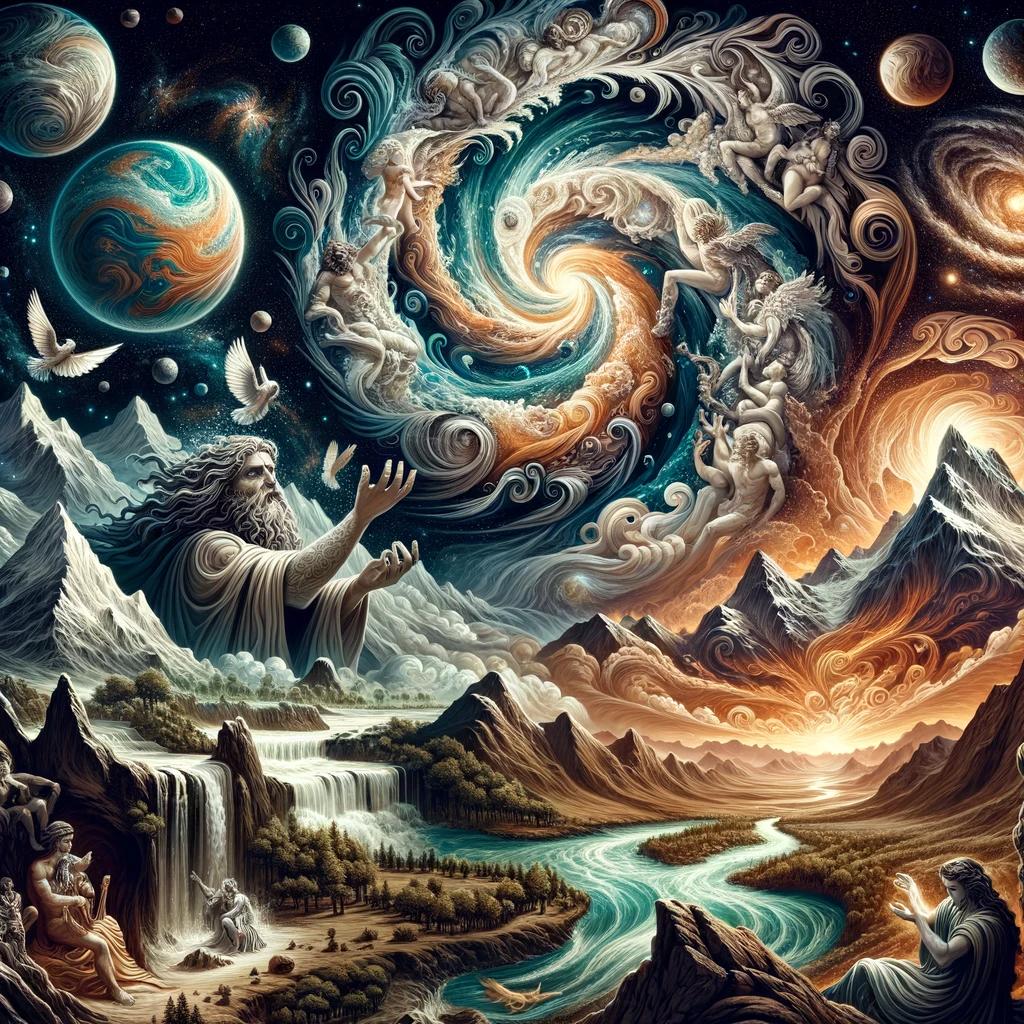
Roman mythology Creation Myth is a fascinating aspect of ancient Roman culture. It is heavily influenced by Greek mythology and features a rich pantheon of gods and goddesses such as Jupiter, Juno, Neptune, Pluto, Cupid, Venus, Mercury, Minerva, Mars, Vulcan, Diana, and Apollo. The creation of Rome is attributed to the mythical figures of Romulus and Remus, who were raised by a she-wolf and later founded the city on the Palatine Hill.
Roman mythology also includes other intriguing stories like the Touch of Midas and the Oracle of Apollo. These myths have had a lasting impact on Western culture, exploring themes of citizenship, power, and tyranny.
This introduction provides a concise overview of the article, highlighting the origins, gods and goddesses, the creation of Rome, other myths and legends, Roman mythology in literature and art, and the lasting impact of Roman mythology.
The Origins of Roman Mythology
Roman mythology has its roots in ancient Rome, where a rich tapestry of beliefs and myths flourished. It draws heavily from Greek mythology, as the Romans identified their gods with the Greek gods and adapted Greek myths to fit their own culture.
This blending of influences resulted in a unique mythological system that reflected the values and beliefs of the Roman civilization.
The Influence of Greek Mythology on Roman Mythology
Greek mythology played a significant role in shaping Roman mythology. The Romans revered the Greek pantheon of gods and saw parallels between their deities and the Greek ones. As a result, many Greek myths were adapted and incorporated into Roman mythology with slight variations to reflect Roman culture and values.
For example, the Roman god Jupiter, known as Zeus in Greek mythology, was seen as the king of the gods and the ruler of the sky. Juno, the Roman goddess of marriage and childbirth, corresponded to the Greek goddess Hera. Similarly, Neptune, the Roman god of the sea, was identified with Poseidon in Greek mythology.
This integration of Greek mythology into Roman beliefs created a diverse and complex system of gods and goddesses that influenced various aspects of Roman life, including religion, art, and literature.
It also allowed for the interpretation and adaptation of myths to suit the needs and values of the Roman people.
Overall, the origins of Roman mythology lie in the blending of Greek influences with Roman culture, resulting in a fascinating and distinct mythological system that continues to captivate and inspire to this day.
The Roman Gods and Goddesses
In Roman mythology, the pantheon of gods and goddesses encompasses a diverse range of powerful deities. Each of them plays a significant role in the understanding of Roman culture and society.
Let’s delve into the fascinating world of these divine beings:
Jupiter: The King of the Gods
Jupiter, known as Zeus in Greek mythology, holds the highest position among the Roman gods. He is the god of the sky and thunder, symbolizing power and authority.
Often depicted with a thunderbolt in his hand, Jupiter is revered as the protector of Rome and its people.
Juno: The Goddess of Marriage
Juno, or Hera in Greek mythology, is the queen of the gods and the protector of women and marriage. She embodies femininity, fertility, and love. Juno’s influence extends to childbirth, family life, and the overall well-being of married couples.
Neptune: The God of the Sea
Neptune, equivalent to Poseidon in Greek mythology, is the god of the sea and all water bodies. He commands the oceans, rivers, and all aquatic creatures. As a powerful deity, Neptune holds the ability to calm or stir the seas at will.
Pluto: The God of the Underworld
Pluto, also known as Hades in Greek mythology, rules over the realm of the dead and the underworld. He governs the afterlife and is associated with wealth hidden beneath the earth’s surface.
Pluto is a solemn and feared deity, rarely making appearances in the mortal realm.
Cupid: The God of Love
Cupid, known as Eros in Greek mythology, is the mischievous god of love and desire. Usually depicted as a young boy with wings and a bow and arrow, Cupid influences romantic feelings and brings people together through the intoxicating power of love.
Venus: The Goddess of Love and Beauty
Venus, or Aphrodite in Greek mythology, personifies love, beauty, and seduction. She is associated with desire, pleasure, and fertility. Venus’s irresistible charm and enchanting presence make her a captivating figure in Roman mythology.
Mercury: The Messenger of the Gods
Mercury, known as Hermes in Greek mythology, serves as the swift messenger of the gods. He is associated with communication, trade, and travel. Mercury facilitates the exchange of information between the divine world and the mortal realm, guiding souls to the afterlife.
Minerva: The Goddess of Wisdom
Minerva, equivalent to Athena in Greek mythology, embodies wisdom, intellectual pursuits, and strategic warfare. She is revered as the patron goddess of artisans and scholars, promoting wisdom, invention, and creativity among mortals.
Mars: The God of War
Mars, or Ares in Greek mythology, represents the god of war and embodies both the destructive and protective aspects of battle. He is associated with courage, strength, and military prowess, revered as the guardian of Rome and its armies.
Vulcan: The God of Fire
Vulcan, known as Hephaestus in Greek mythology, is the god of fire, craftsmanship, and metalworking. He forges powerful weapons and constructs magnificent structures. Vulcan’s skills are unparalleled, driving innovation and technological advances in Roman society.
Diana: The Goddess of the Hunt
Diana, equivalent to Artemis in Greek mythology, is the goddess of the hunt, the moon, and nature. She is associated with wild animals, childbirth, and feminine strength. Diana’s fierce and independent spirit resonates with those who seek refuge in the untamed wilderness.
Apollo: The God of Light and Arts
Apollo, known as Apollo in Greek mythology, embodies the god of light, music, poetry, and the arts. He brings harmony, enlightenment, and creative inspiration to the mortal realm.
Apollo’s presence is revered in both intellectual and artistic domains.
The Creation of Rome: Romulus and Remus
The mythological background of Romulus and Remus lays the foundation for the captivating creation of Rome. According to Roman mythology, these twin brothers were born to the god of war, Mars, and the vestal virgin Rhea Silvia.
Abandoned and raised by a she-wolf, they later discovered their true identities.
The Founding of Rome
A fascinating tale surrounds the founding of Rome by Romulus and Remus. As they grew older, disputes arose between the brothers regarding the location to build the new city. In a poignant turn of events, Romulus ultimately killed Remus, and he went on to establish Rome on the Palatine Hill.
This act would forever shape the destiny of the great city.
Romulus as the First King of Rome
Romulus, as the sole survivor and founder of Rome, ascended as the city’s first king. His leadership and vision helped shape Rome into a significant cultural and political powerhouse. Under his rule, Rome thrived and evolved into a city of immense historical significance, setting the stage for centuries of Roman achievements and influence.
3. The Creation of Rome: Romulus and Remus Explore this captivating tale of Romulus and Remus, their mythological background, the founding of Rome, and Romulus as the first king. Discover the origins of Rome and the cultural impact of this remarkable story that continues to resonate.
Other Myths and Legends in Roman Mythology
Explore the fascinating world of other myths and legends in Roman mythology. These stories provide insight into the rich tapestry of beliefs and tales that shaped the Roman culture.
The Creation Myth
At the heart of Roman mythology is the creation myth, which explores the origin of the universe and the divine beings who shaped it.
This myth highlights the power and creativity of the gods, showcasing their ability to bring order to chaos.
The Touch of Midas
Another compelling myth in Roman mythology is the story of King Midas and his famous touch, turning everything to gold. This cautionary tale illustrates the consequences of excessive desire and greed, reminding us of the importance of balance in life.
The Oracle of Apollo
One of the most revered aspects of Roman mythology is the Oracle of Apollo. This mythical seer served as a conduit between the mortal realm and the divine, providing wisdom and guidance to those who sought it.
Delve into the enigmatic world of prophecies and revelations as Apollo’s oracle reveals destiny and fate.
Immerse yourself in these captivating myths and legends of Roman mythology, gaining a deeper understanding of the beliefs and values of ancient Rome.
Roman Mythology in Literature and Art
In addition to being a part of Roman religious and cultural practices, Roman mythology also found its way into various forms of artistic expression, including literature and visual arts. This section explores the significance of Roman mythology in both literature and ancient art.
Ovid’s ‘Metamorphoses’ as a Key Source
Ovid’s epic poem, ‘Metamorphoses,’ stands as one of the most important literary sources for Roman mythology. Composed in the 1st century CE, this work explores various myths and tales from Greek and Roman traditions, including creation stories, the adventures of gods and heroes, and stories of transformation.
It presents a comprehensive account of Roman mythology and its diverse range of characters and narratives.
Depiction of Roman Mythology in Ancient Art
Ancient Roman art, particularly in the form of sculptures, paintings, and murals, often incorporated depictions of Roman mythology. The gods and goddesses, along with their stories and exploits, were frequently represented in temples, public spaces, and private residences.
These visual representations not only showcased the rich mythology of the Romans but also served as expressions of cultural and religious beliefs.
The artistic depiction of Roman mythology allowed the viewers to connect with the divine, reinforcing their religious devotion and understanding of the mythological narratives.
These artworks provided tangible and visually striking representations of the gods and their stories, creating a visual language that enhanced the collective understanding and appreciation of Roman mythology.
- Characteristic features of Roman gods and goddesses were depicted in ancient art, such as Jupiter’s thunderbolt, Venus’s beauty, and Mars’s armor.
- Mythic scenes and episodes, like the abduction of Persephone by Pluto or the judgment of Paris involving Venus, were popular artistic subjects.
- Ancient Roman artists also depicted mythological animals, such as centaurs, satyrs, and griffins, adding to the fantastical nature of the mythological world.
Through their creative expressions, both Ovid’s ‘Metamorphoses’ and the artistic representations of Roman mythology enriched the cultural and religious fabric of ancient Rome and left a significant impact on the legacy of Western art and literature.
The Lasting Impact of Roman Mythology
Roman mythology has had a profound and enduring influence on Western culture. Its rich tales and vibrant characters continue to captivate and inspire artists, writers, and thinkers throughout the ages. In exploring the impact of Roman mythology, two key themes emerge: its influence on Western culture and its exploration of themes of citizenship, power, and tyranny.
Influence on Western Culture
Roman mythology, heavily influenced by Greek mythology, has left an indelible mark on Western culture. The gods and goddesses of Rome, such as Jupiter, Juno, and Venus, have become iconic figures representing various aspects of human experience.
Their stories and symbols have permeated literature, art, and architecture, and continue to be referenced and reinterpreted in contemporary works.
Ovid’s epic poem ‘Metamorphoses’ stands as a monumental work encapsulating Roman mythology.
This literary masterpiece has served as a source of inspiration for countless writers and artists, ensuring the longevity and widespread dissemination of Roman myths.
Furthermore, the Roman gods and goddesses have been adapted and assimilated into other cultures and belief systems, transcending geographical and cultural boundaries.
The enduring presence of Roman mythological elements in various forms of popular culture, including movies, television shows, and video games, speaks to their enduring appeal and relevance.
Themes of Citizenship, Power, and Tyranny
Within the realm of Roman mythology, a recurrent exploration of themes of citizenship, power, and tyranny can be observed.
The myth of Rome’s creation, attributed to Romulus and Remus, speaks to the idea of founding a city and establishing principles of governance. This narrative explores the concepts of leadership, civic duty, and the quest for power and authority.
Additionally, Roman mythology delves into the intricate dynamics of gods and mortals, highlighting the precarious nature of power and the consequences of hubris. Through tales such as the Touch of Midas and the Oracle of Apollo, moral lessons regarding the dangers of unchecked power and the need for humility are conveyed.
The exploration of these themes in Roman mythology resonates with contemporary society, prompting reflection on issues of governance, responsibility, and the abuse of authority. The lasting impact of these mythological narratives lies in their ability to explore timeless human dilemmas and provoke introspection.
In conclusion, Roman mythology has left an enduring legacy on Western culture. Its influence can be seen through its integration into various artistic mediums and its exploration of themes related to citizenship, power, and tyranny.
As we delve into the rich tapestry of Roman mythology, we gain insights into the complexities of human existence and the perennial challenges we face.
.

